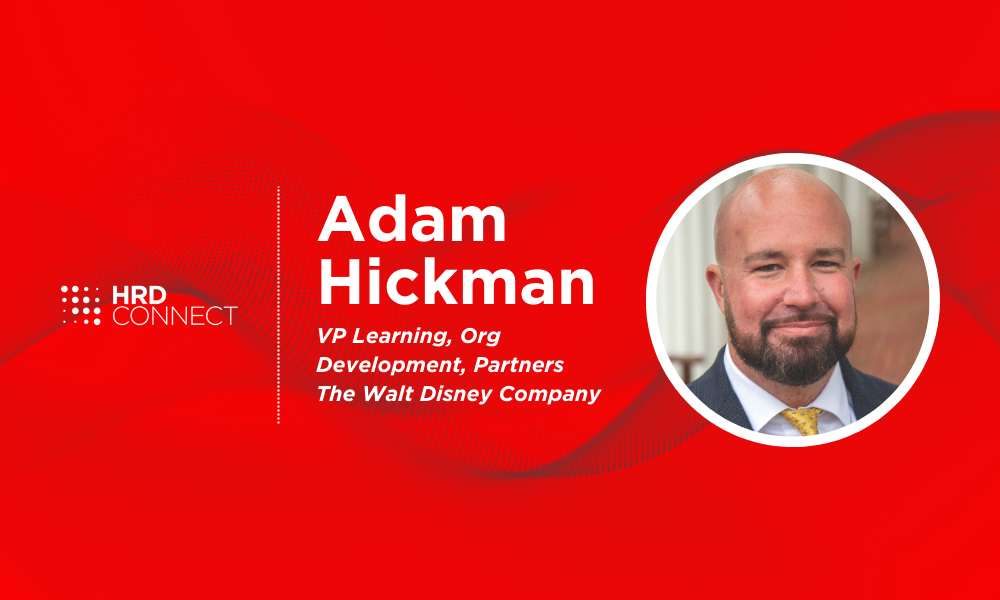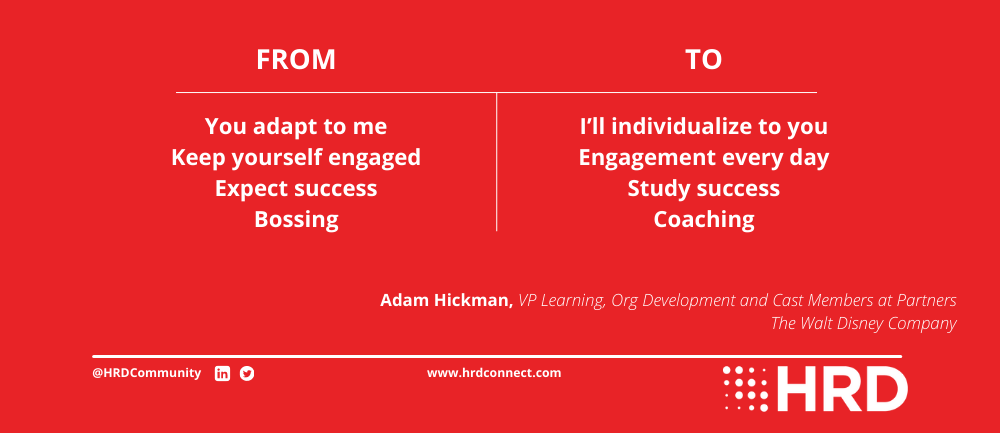Repositioning the role of the manager to resolve employee disengagement
- 8 Min Read
Managers account for at least 70% of the team’s engagement across your organization. It’s time we reposition their role and train them to succeed.
- Author: HRD Connect
- Date published: Apr 25, 2023
- Categories

What’s the one decision that sets the precedence of your organizational culture, the performance of your employees, and ultimately the legacy your leadership leaves behind? Hint: It’s also the decision that companies fail to get right 82% of the time.
If you think whom you deem manager, you’d be right.
The role of the manager accounts for at least 70% of the team’s engagement across your organization. This means that organizational risk lies with the manager for each interaction, email, team message, and the more structured conversations throughout the year.
The evolving role of the manager
In the past, the manager’s role has been overlooked. It has been thought of as a role that just takes care of administration or deals with other people’s problems. Even American film has contributed to the downplay of the role of a manager with characters such as Michael Scott from The Office.
Yet, I would contend Michael played the most in his office. His type of influential role can create a culture of high performance or a toxic workplace. In recent times, characters like Ted Lasso are winning people over with their coaching-leader effect to inspire the team. While both characters serve the purpose of making you laugh, their behavior is an authentic and innate tact for leading that modern organizations see as talent.
But the role of the manager doesn’t stop with just great humor, inspiring stories, and the ability to give someone a prep talk when times are tough. As the most important role in an organization, there are items from the past we first must rid of to think about what’s possible in the future.
‘You adapt to me’ to ‘I’ll individualize to you’
To revolutionize the practice of management, we should start with reteaching, coaching, and sustaining the art and craft of management. Scholars and practitioners talk about the art and science behind management. But I contend it is much simpler than a science. It’s a craft – it’s the application that makes the difference.
In the workplace of the past, we would see managers who expected employees to adapt to them and their style. We now know the most successful leaders are the ones who individualize the work experience per employee. This requires time, effort, and listening for talent. Once the best managers identify the talent of the person, they make sure the employee is doing something with it and working at their best each day.
In short, talent falls out of people’s mouths daily. We must retrain our (and our manager’s) listening abilities to hear it and learn how to individualize management to the talent.
‘Keep yourself engaged’ to ‘engagement every day’
The term engagement (or satisfaction) has taken been taken more seriously since March 2020 in the United States. Yet, we are nowhere close to being an engaged workforce. We are going in the wrong direction.
The fix is rooted in two parallel thoughts.
- Employee engagement is a competitive advantage
- It is your managers’ responsibility to own.
Managers and leaders need to get over the thought that a survey about engagement will unlock the keys to performance outcomes. It’s irresponsible at best to run a survey with no intent or understanding of the application. The scary part is that it’s not about the number within the survey. But rather, the exploration of the number that makes the difference.
A survey, a conversation, or anything related to employee engagement is a competitive advantage. This has been proven time and time again by behavioral economic scholars such as Daniel Kahneman who found that decisions are 70% emotional and 30% rational.
The process of discovering what engages your employees is done at the local level with your managers. While C-Suite members can help create vision, mission, and values, your true testament to engagement is via your managers.
‘Expect success’ to ‘study success’
Hiring talent to join your organization is great. But the work, time, and effort to hire someone are costly. So, we expect success from the start. We expect it without coaching, education, or helping the employee make sense of experiences. We disappear and reappear at mid-year and end of the year to judge.
An iconic meta-analysis by Frank Schmidt and John Hunter evaluated this thought. It drew on 85 years of research in personnel selection to compute a measure such as GMA (general mental ability) compared to job performance. They determined that both serve a purpose in the hiring process, but there is a threshold that experience versus the ability to do the work crosses. The art of faking it until you make it is not sustainable. The more costly trial is to hire a manager and let them sit in position for a year to see what happens. Not too many CFOs are excited to hear this method be utilized. Even more, the cost of a bad hire per Northwestern University is at least 30 percent of the individual’s first-year earnings.
During your hiring process, ask questions and use scientific instruments or methods based on whether the potential manager shares the belief of what matters in the role with employees. Do they align on what is engaging and developing your employees each day?
A tactic you can put into play right now is utilizing your HRBP’s to facilitate the process of studying success. Narrowed further, aim this process at studying the best managers you have in your company today. The fastest and most cost-effective way is based on your company’s core competencies. Build a bank of questions that gets at the behavior of how they work, rather than what they do.
Studying your most successful managers in this way will build a trendline related to how the best do things differently that you can use to inform hiring and talent development.
‘Bossing’ to ‘coaching’
Let’s talk sports for a minute. When you’re watching any sport on TV and something goes wrong, the camera often pans to two individuals: the owner, and the coach. The owner, in this analogy, is our business leader who sets strategy, approves salaries, and foresees big initiatives in the future.
And then to the coach, whom we could correlate to the role of the manager. Teams hire coaches to develop their players. Transitioning this thought into the workplace, the players, or rather employees, are very clear as to why they would leave. What is most often said is related to the role of the manager. No employee wants a boss anymore.
While we make jokes and call people boss, the negative connotation associated with this term signals to many that it’s negative. A boss is someone who sits back and gives orders. They don’t care about engagement. They delegate everything possible. As you read this, right now, if you say the word boss close your eyes. Who comes to mind? We’ve all experienced one along the way in our careers.
If the belief is that managers are accountable for employee engagement, performance, and development, then conversations and coaching must follow – and HR leaders must help. The partnership with HR and managers related to performance objectives is a great starting point.
HR leaders can help steward and coach the process of setting clear expectations, offering feedback, and helping practice conversations before you engage the employee. This seems to be a rare practice as only 26% of employees say the feedback they get helps them do better work. Count on your human resource leaders and partners to help facilitate, not own, the practice of coaching.
The manager of the future
Your current talent and new talent want a coach. A coach who is on the field develops skills. They help employees make sense of what they have experienced as a growth opportunity. Coaches set clear expectations and goals aimed at performance and individualize feedback to the talent of the person.
These shifts mentioned above are all linked to the most important role in your organization: The manager. The managers you interview, hire, and train know that they own up to 70% of team engagement. They know they are the ones present when you are not. The future will be built upon how well we develop that manager role. Those who separate from the best are activating tactics related to building manager depth.
________________
As a dynamic, hands-on, highly technical leader with a wealth of knowledge and experience building education, training, and organizational development programs, Dr. Hickman champions complex projects in research and development that uncover the need for continuing education and training throughout the organization.
Dr. Hickman is a visionary leader who delivers growth and profit through technological innovations, customer experience, leadership development, and networking.


